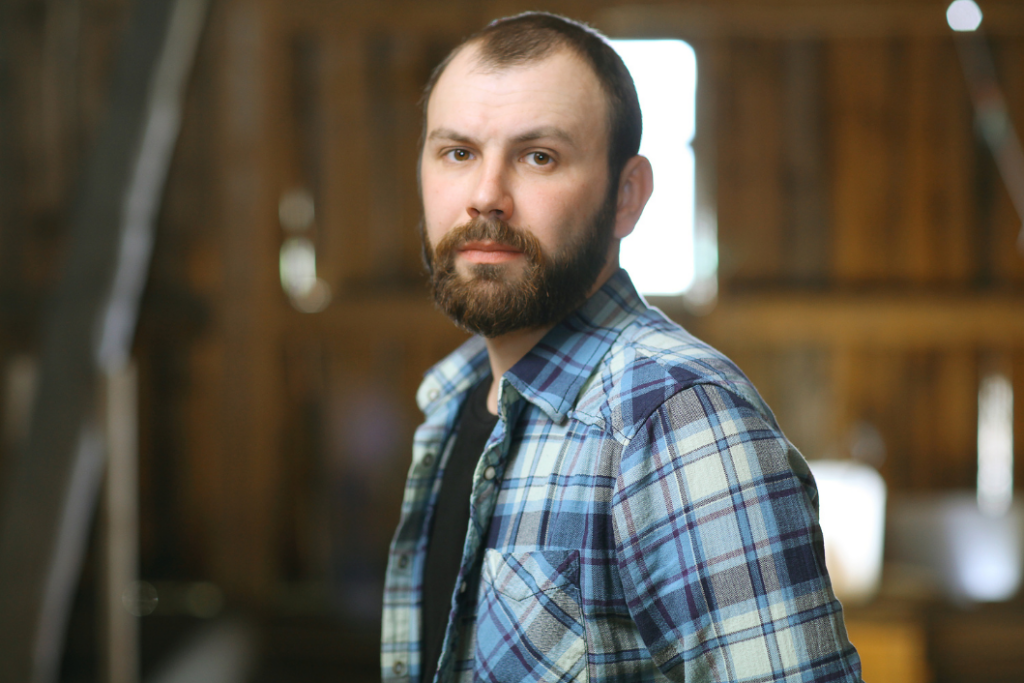Men, you have had horrible role models, which is hard for you. It is hard for all of us because it’s hard to know what to do with your emotions if you haven’t seen anything modeled besides stuffing it down.
You were likely taught that being a provider of physical needs was your job. You witnessed your caretakers struggle with emotions and then stuff them down or push them away. Maybe they yelled, walked out the door, or drank their emotions into suppression. You didn’t see reflection, and you watched the pendulum swing from one extreme to another, and either there was yelling or despondency. There may have been attempts to have fun because that seemed like a way to make people happy, but there was also yelling and despondency on the family vacation. The kids argued, too, but there were no attempts to support a resolution or moderate discussion because it requires energy to slow down the pendulum swing. The pendulum swung between yelling and despondency because that is all your parents were taught and what their parents were taught. It’s nobody’s fault. Nobody failed. It’s the cycle that is to blame.
Someone in your life probably tells you to step outside of the cycle and make a change, but change is scary, and sitting with emotion is hard. Emotions are hard. Asking you to change is not a personal attack on you. It is not something you are failing at. You are not a bad person, and above all, if someone is telling you that this change needs to occur to stay in a relationship with them, it means that they love you.
This is not only evidence that you are loved, but it is also evidence that you are, in fact, amazing. You don’t know what you don’t know because nobody taught you. And the people who were supposed to teach you weren’t taught either. You were loved, but they didn’t have the knowledge to share with you about what you needed to know.
Every emotion has a physical sensation, and it’s that physical sensation that causes us the most discomfort. It’s hard to sit with yourself when you are having strong emotions because it also makes breathing hard, and your brain tells you that you are in danger when it’s hard to breathe, so the brain says fight like hell or run the #*$! away. It’s not the mental awareness of the emotion that is the hardest to deal with. It is the fact that your chest feels tight, as if an elephant were sitting on top of you. Your hands get sweaty. The blood is pumping throughout your body and gushing upward to your brain, and it feels like you are about to explode. You don’t want to hurt anyone, especially someone you love, so it makes sense that given the realization that you will either explode or walk away, walking away is the safer option. But walking away involves pushing away emotion.
Emotions live inside us. Metaphorically, they are relatively about the size of a baseball. When you push away your feelings, they don’t go away because they are attached to you by a rubber band. You can only push them away for so long, and you know what happens to a rubber band when it reaches its stretch limit and snaps back. Thwack! It comes back at quadruple the speed and force, which hurts worse because now it’s the size of a softball. So, you push that away, and that’s attached to a rubber band, too, so you then push that away, and bam! It comes back at quadruple the speed and force, and now it is the size of a basketball. This cycle keeps happening until, essentially, you become numb to the process, and the numbness makes it hard to feel when you are anesthetized to the emotion. And when someone asks you how you feel, you genuinely don’t know the answer because you can’t feel the emotion anymore. This hurts relationships.
This pattern repeats repeatedly because no one taught you that sitting with your emotions is the only way to work through emotion. The Swiss psychiatrist and psychoanalyst Carl Jung is credited with saying, “What you resist persists,” and taking that further, we can assert that what we embrace dissolves. When we sit with our emotions, they get smaller, making it easier to understand. We get the clarity to communicate our feelings more compassionately. This helps relationships.
Not all emotions go away. There are some hurts within us that we will always carry. My aunt once told me that a dear friend said to her that she would always carry around some hurt and sadness with her because she lost her youngest son when he was 14 years old. Addressing the things that hurt us and cause anger and sadness makes them smaller, so doing the emotional work does pay off because there is a big difference between the size and weight of a golf ball and a bowling ball. It’s been over 25 years since my cousin died, and I know my aunt and uncle still carry around the grief of their tremendous loss. I think because of their ability to grieve and sit with some of the hardest emotions, they now have space for other emotions to enjoy the time they have with their other two incredible sons and five beautiful grandchildren.
Sitting with emotions takes work; it’s hard, and it requires slowing down the energy of the swinging pendulum to get in the space that it is in the middle. We are not comfortable living in extremes. Comfort, ease, and enjoyment are found in the stillness of the pendulum.
How to sit with emotion:
- Notice that the thoughts you are having are causing suffering. This awareness is critical because letting our thoughts go on autopilot is easy. We can think for days without realizing the thoughts are unchecked and probably not even based on evidence.
- Recognize that your body is experiencing a difficult sensation. This step isn’t crucial in the short term, but noticing this helps in the long run. Because the sensation of the emotion precedes the mental awareness that we have the emotion, if we can connect the sensation and the emotion (mind/body connection), we will have more data to become more aware of the emotions in the future.
- Name your emotion. Use a list of emotions because there are more words to describe how you feel than just the blanket emotions of sad, glad, and mad. The more descriptive we can be about how we feel, the more successful we will be in getting the clarity we long for, and then we will talk about the emotions with those we love. No matter how difficult the emotions are, we can be more articulate and kinder. This is the cycle that we deserved growing up, and our parents deserved to be a part of that cycle as well, and so on. It’s important to know that we deserve that kindness no matter how many mistakes we’ve made. Download list of emotions.
- Recognize the unmet need. Every emotion is a need bubbling up to the surface. We were not taught to understand and identify our needs. We were taught to care for other people’s needs and neglect ourselves to not be perceived as needy. That’s why getting clarity with our emotions is hard. There’s a list of universal human needs that can also help with that.
- Make a request of yourself or someone else. Asking for help is admitting that we are vulnerable. Vulnerability is NOT a sign of weakness. Vulnerability leads to communication and connection, and connection is what the person who loves you is asking for. Making a request of yourself is also helpful and can be a stepping stone to making requests of others. Some requests of yourself might be empathetic self-talk like, “It makes sense that you are disappointed because you really wanted to go on that trip.” Or request yourself to take three intentional deep breaths. Or positive affirmations like, “I matter, and I deserve love and forgiveness.”
Talking to a therapist can be helpful. Therapists are neutral, and because they are professional, you don’t need to worry about how you make them feel like you do in your mutual relationships, which are, in fact, a two-way street. Being more careful and compassionate with your words with loved ones is necessary. And yes, talking about your childhood with a therapist is beneficial. No, we are not trying to blame our parents for who we are now, but we benefit from exploring how we came to the self-limiting beliefs holding us back now.
Sometimes, the anesthetized feelings make it hard even to talk to a therapist. In this case, it could be helpful to speak with your primary care physician, a psychiatrist, a nurse practitioner, or a physician associate. Talking with a therapist is an important step in developing compassionate communication and improving your relationships and a scientifically proven way to have a happy and healthy life.
If you need support don’t hesitate to get in touch.



